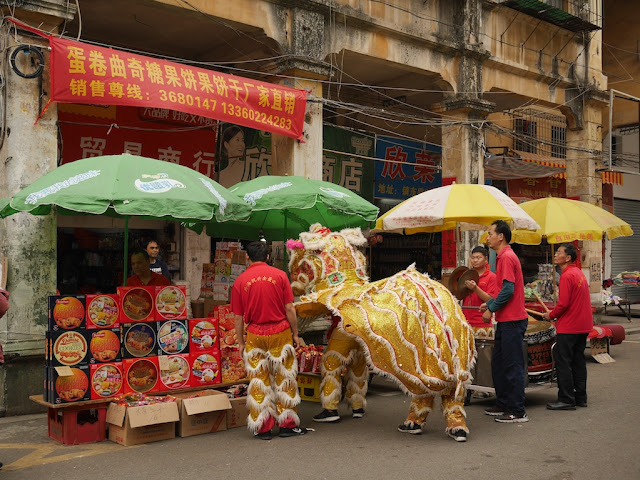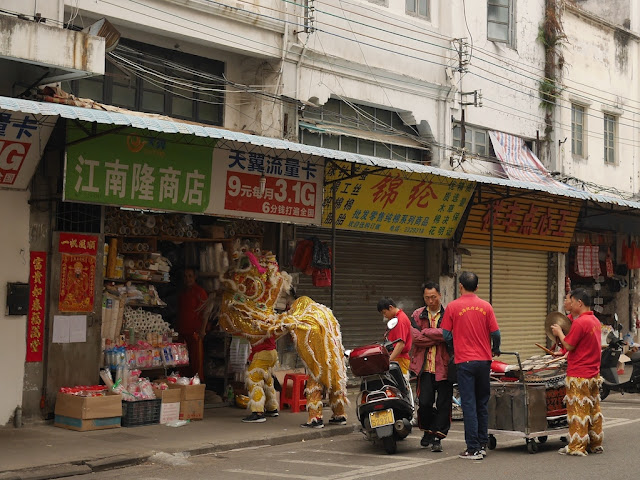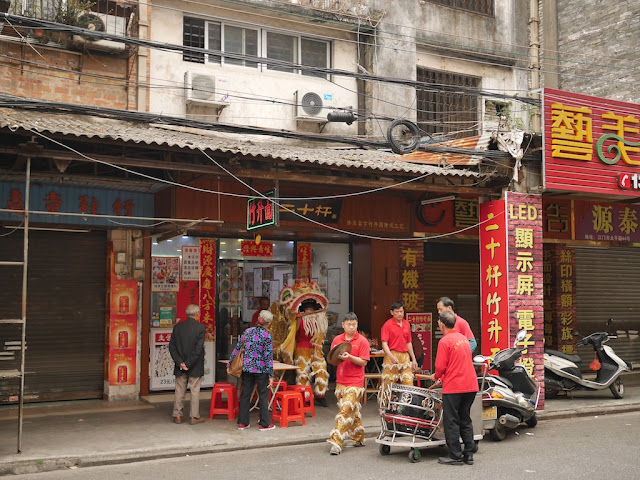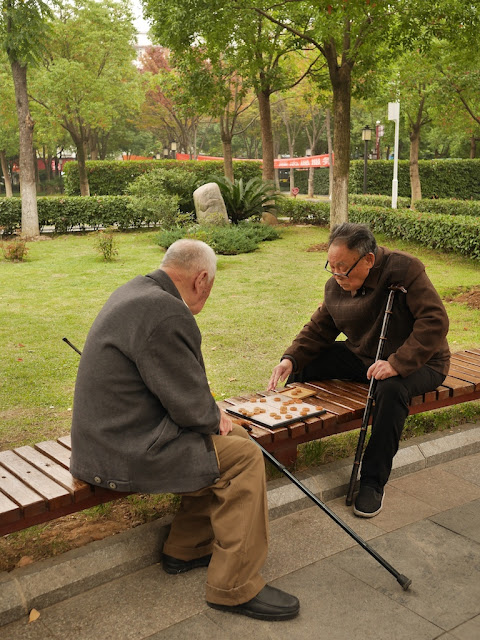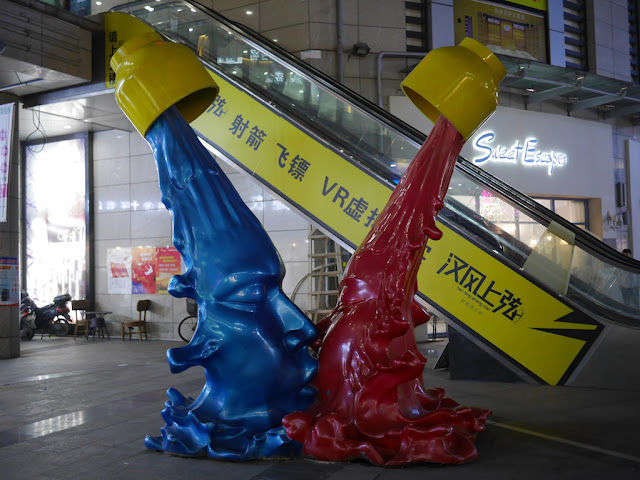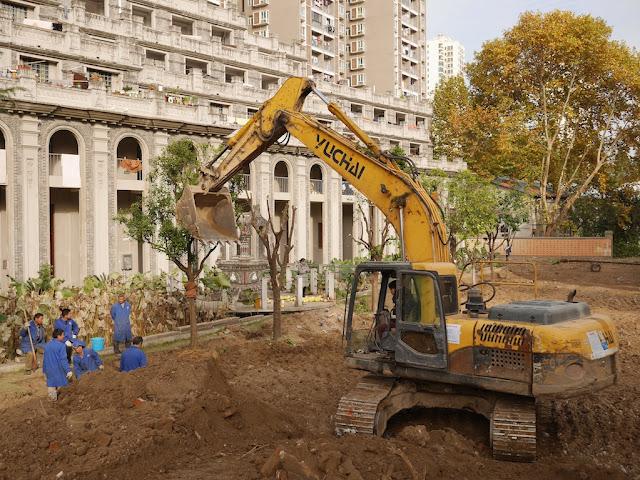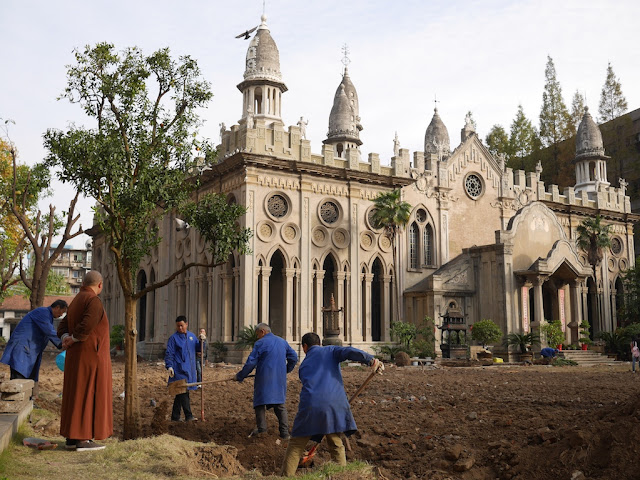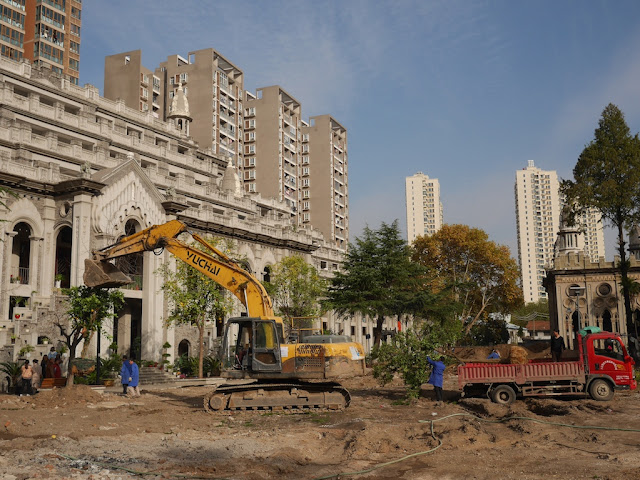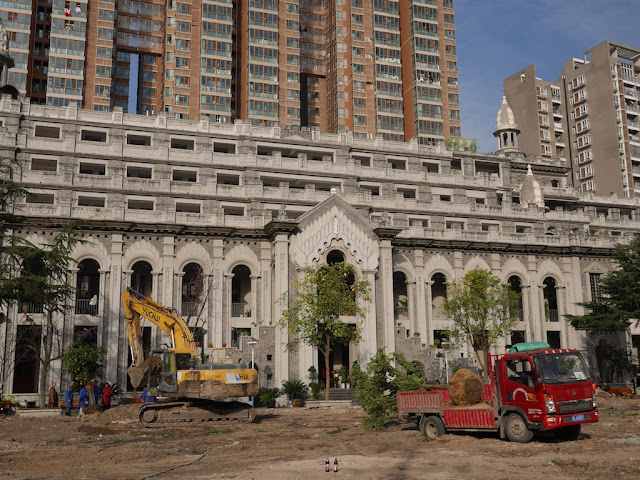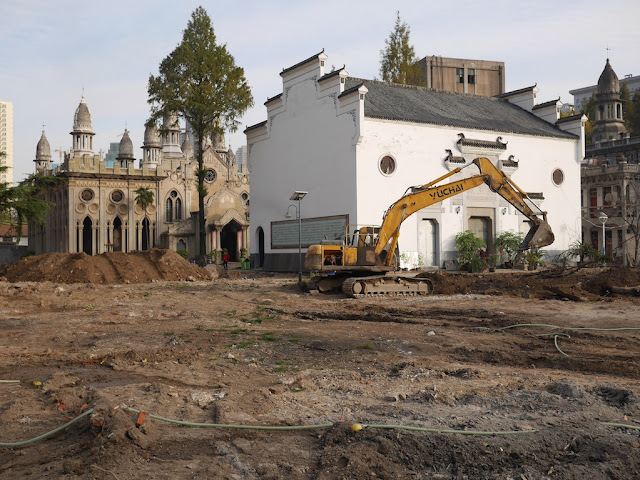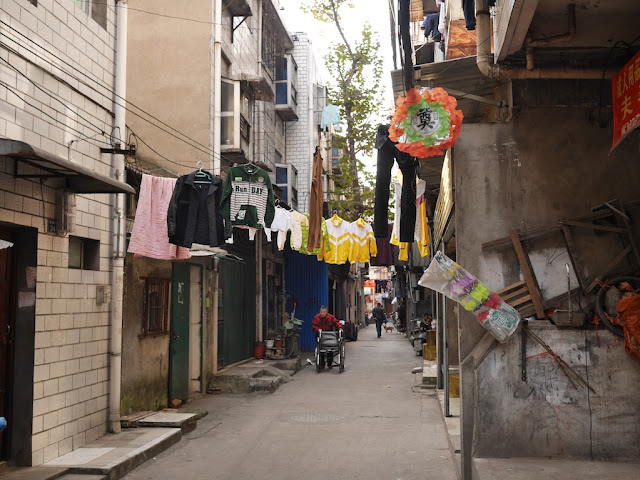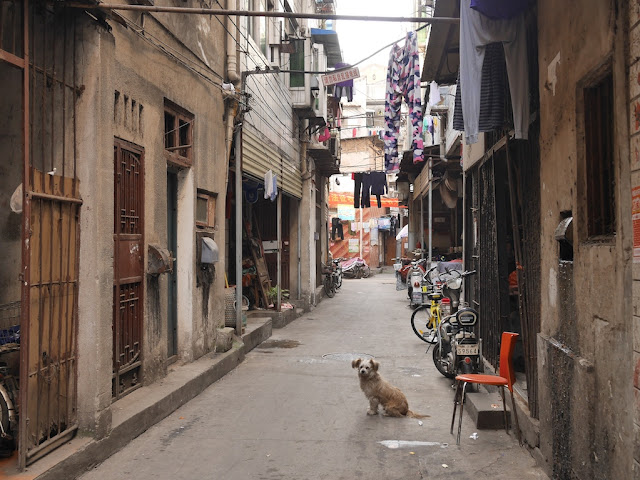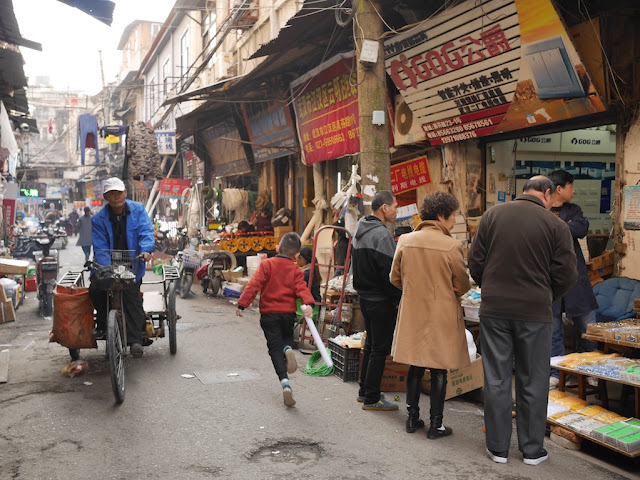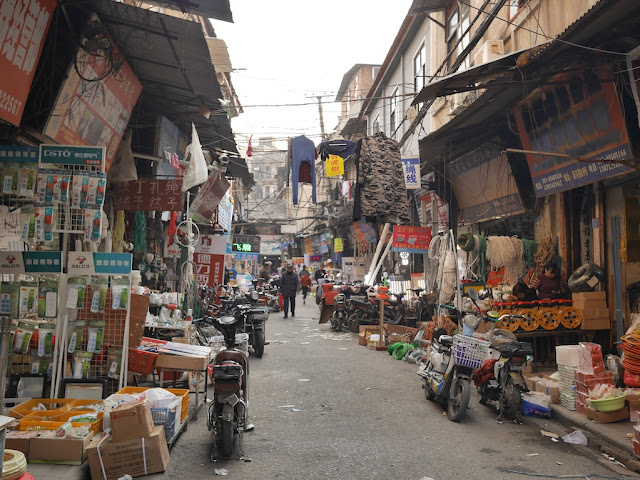During the Lunar New Year holiday in China many shops & restaurants close and many red signs with messages of good luck appear. Some places remain open, though, or reopen before the end of the holiday period. For those that do, they may experience a common Chinese tradition.
Today on Zhendong Road in Jiangmen I spotted (well, first heard from afar) a lion dance troupe.
After bringing some good luck and fortune to a shop in exchange for a red envelope stuffed with cash, the lion dance troupe headed on.
Very quickly they found another shop desiring their services.
The action continued on Diaotai Road less than a block away from where I saw xiangqi being played two days ago.
Then after visiting a few shops down Xinshi Road . . .
. . . they started working their way down Taiping Road.
It wasn't long until they were bringing fortune to a familiar restaurant.
And off they went while I enjoyed a meal across the street at a restaurant which had recently reopened after a holiday break. They didn't desire any lion dancing, but that was fine to me.
I had already been granted a brief personal performance.
Today on Zhendong Road in Jiangmen I spotted (well, first heard from afar) a lion dance troupe.
After bringing some good luck and fortune to a shop in exchange for a red envelope stuffed with cash, the lion dance troupe headed on.
Very quickly they found another shop desiring their services.
The action continued on Diaotai Road less than a block away from where I saw xiangqi being played two days ago.
Then after visiting a few shops down Xinshi Road . . .
. . . they started working their way down Taiping Road.
It wasn't long until they were bringing fortune to a familiar restaurant.
And off they went while I enjoyed a meal across the street at a restaurant which had recently reopened after a holiday break. They didn't desire any lion dancing, but that was fine to me.
I had already been granted a brief personal performance.



